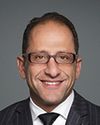It's hard to speculate on what might happen to the future of the industry over time. This is a question that has been debated in the telecom industry for a very long time. It has been debated around the notion of foreign ownership. Do we just open up the border and let U.S. come in and buy out Canadian telecommunications providers? These are broader questions that have a lot to do with [Technical difficulty—Editor]. What is it with respect to sovereignty and security in a nation? How many players are enough, etc.?
At the heart of it, in any country in the world where you have a number of strong players with the ability to invest and they can go toe to toe, that's the greatest source of competition: strong players that can go toe to toe. [Technical difficulty—Editor] Shaw and Rogers will be far stronger, far more capable and can go much further toe to toe, whether it's building out or going right up against the competition. I believe that in my heart.
I look at competitive intensity with my team every Monday and Tuesday for the [Technical difficulty—Editor] in a sort of “what happened this weekend?” discussion. I will tell you that every weekend it's a big fight for the next customer, and the strength of the company matters in terms of that fight.



